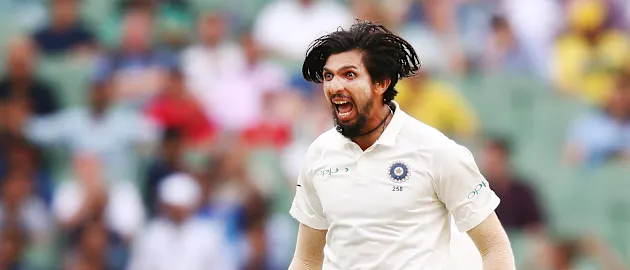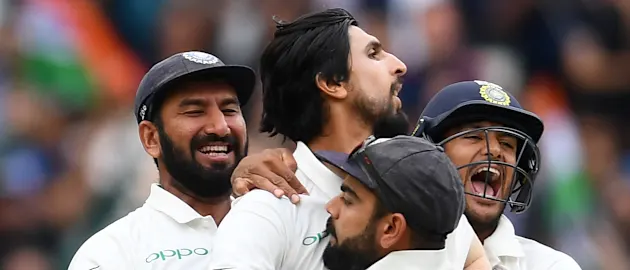Ishant reveals Gillespie hand in spectacular rise


A visibly improved Ishant has morphed from an assiduous but often luckless worker into an effective wicket-taker over the last couple of years, after spending a decade previously under the radar. Since the start of 2018, he has snared 66 Test wickets at an average of 19.43, taking 42.7 balls per scalp. These are visible improvements from his corresponding numbers for the period preceding that, with the average hovering at 36.55 and the strike-rate at 67.1.
Now, as he enjoys a significant second wind to his career, Ishant reflected on the genesis of that transformation, on the sidelines of his state Delhi’s 2019-20 Ranji Trophy match against Hyderabad at the Feroz Shah Kotla.
"Zak [Zaheer Khan] gave us a lot of solutions. A lot of people would tell me that I need to increase the pace of my fuller deliveries,” Ishant said. “No one told me how to do that. When I went to play county cricket, Jason Gillespie told me the solution.

"Gillespie told me that in order to increase the pace of my fuller deliveries, you don't just release it but hit the deck so that it should hit the knee roll. Earlier, I would put cones during nets. That's okay for a youngster who wants to get his area right. But for someone like me, I need to see where my ball is finishing rather than where it's pitched."
Ishant also put the resurgence down to the experience gained from years of hard toil. Though usually accurate with his lines and lengths, Ishant would often struggle for wickets, and his deliveries, though precise, would often seem to lack that extra bite or venom that would unsettle batsmen.
But now, he said, he knows how to go about his job in a professional manner. "During [MS] Dhoni's time, some of us didn't have that much experience. But when Virat took over, all of us had gained a fair amount of experience by then and that helped," he said.
"From the beginning, people started calling me 'workhorse'. So seniors at that time would tell me that you need to bowl 20 overs, if you even give 60 runs, you will still end up getting three wickets. So you bowl back of length deliveries and batsmen start leaving those till they get set, and then come back to attack you.
"Your job is to get batsmen out whenever you can. I was not experienced enough earlier, but now I am professional and I know my job."
Ishant is now part of an intimidating group of fast bowlers, having formed an excellent combination with Mohammed Shami and Jasprit Bumrah and, in the latter’s absence due to injury during India’s short home season in 2019, Umesh Yadav.

Together, Shami, Ishant and Umesh took 81 wickets in 2019, at a world-beating average of 15.46 and strike-rate of 31. "We are very proud that fast bowlers are dominating. When Shami and Umesh came in, our attack was inexperienced, so we didn't take wickets in tandem,” Ishant said.
"We share our experiences. Not just me but they also give their feedback about how the pitch behaves, about conditions. The communication is far better now. First, we didn't know each other a lot, you are reserved but now communication level is very good.
“Earlier, the fast bowlers would be rotated a lot. That's also a reason that consistency as a group couldn't be achieved. If you know that you have a pool of three to four fast bowlers (now with Jasprit Bumrah), that increases communication. Earlier, there would be six-seven bowlers, [so] communication wasn't there."
